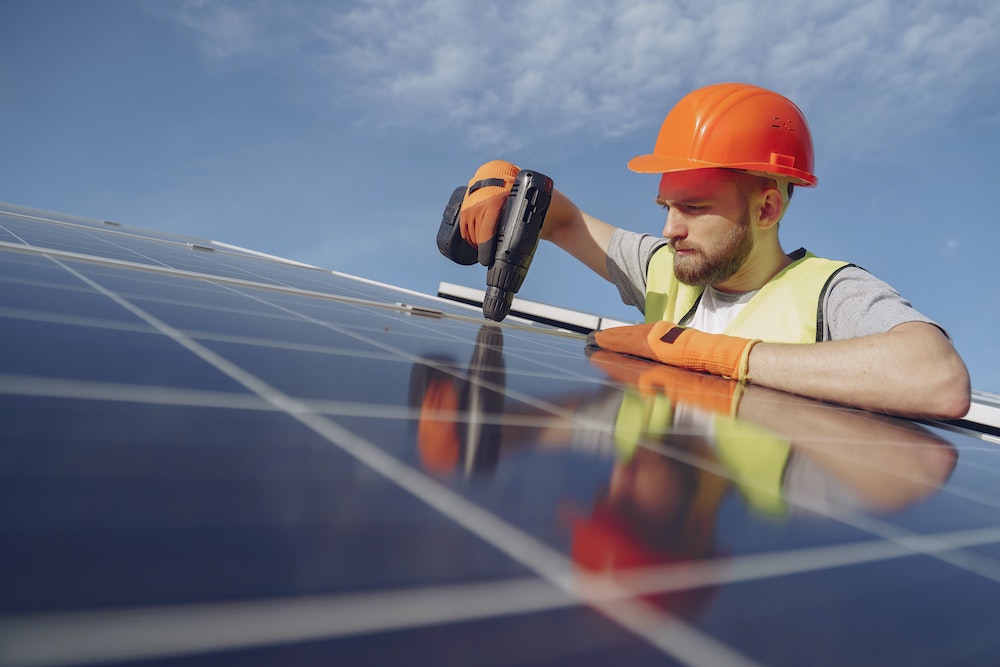
Powerful Moves: Solar Panel Installations
Harnessing the power of the sun through solar panel installations is a sustainable and forward-thinking way to power homes. Explore the benefits, considerations, and steps involved in making the transition to solar energy.
The Green Promise of Solar Energy
Solar energy is a clean and renewable resource that holds immense promise for a sustainable future. Solar panels harness sunlight to generate electricity, significantly reducing reliance on non-renewable sources. By opting for solar panel installations, homeowners contribute to the reduction of carbon emissions, mitigating the environmental impact and promoting a greener energy landscape.
Economic Benefits and Return on Investment
Investing in solar panel installations not only benefits the environment but also proves economically advantageous. Many regions offer incentives, tax credits, and rebates for homeowners adopting solar energy. Additionally, the ability to generate your own electricity can lead to significant savings on monthly energy bills. Over time, the return on investment becomes increasingly apparent as the initial cost of installation pays off through reduced utility expenses.
Considerations for Home Suitability
Before embarking on a solar journey, assess the suitability of your home for solar panel installations. Factors such as roof orientation, shading, and available space play crucial roles in the efficiency of a solar system. A thorough evaluation ensures that the installation will yield optimal results, maximizing the capture of sunlight for electricity generation.
Choosing the Right Solar Panels
Solar panels come in various types, each with its own set of characteristics. Monocrystalline, polycrystalline, and thin-film solar panels differ in efficiency, aesthetics, and cost. Consider your specific needs, budget, and aesthetic preferences when choosing the right solar panels for your installation. Consulting with a solar professional can provide valuable insights into the most suitable options for your home.
The Installation Process: From Assessment to Connection
The installation process involves several key steps. First, a solar professional assesses your home’s suitability and designs a system tailored to your energy needs. Once the design is approved, the installation team mounts the solar panels on your roof or on the ground, connecting them to the inverter and electrical panel. Finally, the system undergoes inspections and approvals before being connected to the grid.
Inverter Technology and Energy Conversion
Inverters play a crucial role in the solar energy system, converting direct current (DC) generated by the solar panels into usable alternating current (AC) for your home. The choice of inverter technology, whether string inverters, microinverters, or power optimizers, impacts the overall performance and efficiency of the solar installation. Each type has its advantages, and the selection depends on factors such as shading, system size, and budget considerations.
Monitoring and Maintenance
After solar panel installations, monitoring and maintenance ensure the system’s longevity and optimal performance. Many solar systems come equipped with monitoring tools that allow homeowners to track energy production and system health. Regular maintenance, such as cleaning panels and checking for any issues, ensures that the solar installation continues to operate efficiently over the years.
Grid-Tied vs. Off-Grid Systems
Solar panel installations can be grid-tied or off-grid. Grid-tied systems are connected to the local utility grid, allowing homeowners to draw electricity from the grid when solar production is low. Excess energy generated by the solar panels can be fed back into the grid, earning credits or compensation. Off-grid systems, on the other hand, operate independently, relying solely on stored solar energy. The choice between grid-tied and off-grid depends on individual preferences, energy needs, and local regulations.
Storage Solutions: The Rise of Solar Batteries
Solar batteries are emerging as an integral component of solar panel installations. These batteries store excess solar energy generated during the day for use during periods of low sunlight or at night. Solar battery technology is advancing rapidly, offering homeowners the ability to further reduce reliance on the grid and achieve greater energy independence.
Empowering Homeowners with Solar Energy
Solar panel installations empower homeowners to take control of their energy consumption, reduce their carbon footprint, and enjoy long-term economic benefits. Transitioning to solar energy is a powerful move towards sustainability and a greener, more resilient future. To explore more about solar panel installations and their transformative impact, visit Solar Panel Installations. Take the first step towards harnessing the sun’s power and embracing a cleaner, more sustainable energy solution for your home.
